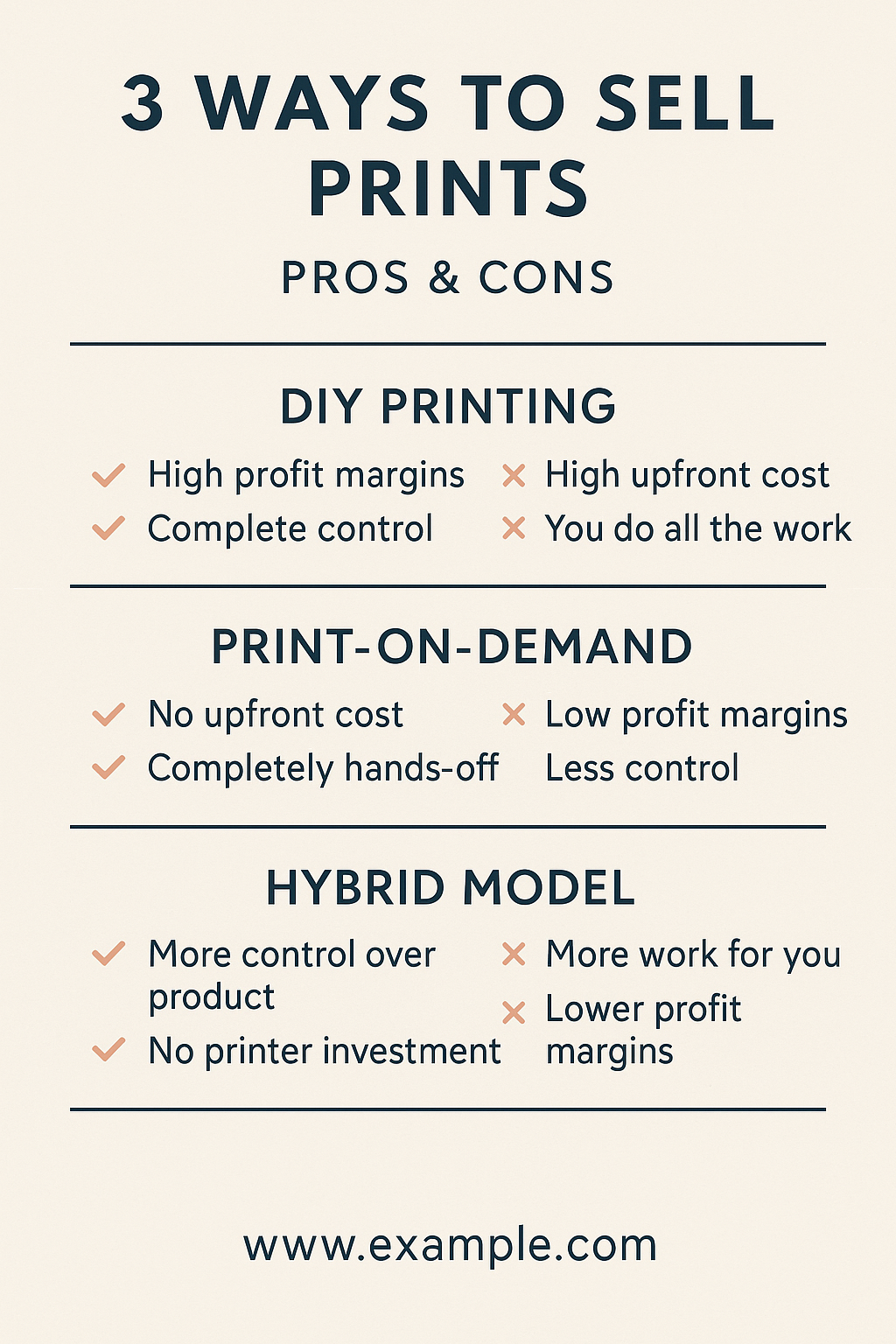Turning Art into Prints
Lessons from 3 Successful Artists + How to Start Your Own Print Business
When most of us think about making money as artists, we think of selling originals. But here’s the thing — originals are one-off sales. Once they’re gone, they’re gone.
Prints, on the other hand, let your art keep working for you. They allow your work to reach a wider audience, offer more affordable options for collectors, and create recurring income without having to constantly produce new originals.
Today, I want to share:
-
Three inspiring artists who’ve built thriving businesses around prints
-
Three practical ways you can start producing your own prints
3 Artists Thriving with Prints
1. Laurie Anne Gonzalez
Laurie Anne is a full-time painter who makes most of her income selling art prints online. She partners with trusted small businesses to professionally print and ship her work worldwide.
One thing I love about Laurie Anne’s approach? Her originals are tiny — often just 4x6 inches. She knows her main income comes from prints, not the originals, so she doesn’t waste time creating massive canvases. Her art is painted with reproduction in mind.
2. Tahlia Stanton
Tahlia Stanton is a bold Australian painter with a wildly successful print business. Her work is vibrant, full of character, and deeply tied to self-expression and freedom.
Tahlia has built a brand as much as an art business. Her prints let her share that brand with a broad audience, far beyond what a single original painting could achieve.
3. Halie Torris
Halie creates large-scale figurative oil paintings exploring identity, feminine energy, and queer storylines. But alongside those originals, she runs a print shop and merch line that spreads her message far and wide.
The key takeaway from Halie is accessibility — prints allow her work to enter the lives of many more people who may never be able to afford a large oil painting.
👉 Notice the common thread: all three of these artists keep their websites and shops simple and easy to use. Customers can choose from:
-
Different print sizes
-
Framed or unframed options
-
Signed or limited editions
Simplicity sells. The easier you make it for your customers to buy, the more likely they are to do so.
3 Ways to Produce Prints (Pros + Cons)
Okay, so how do you actually start selling prints? There are three main approaches, and each has its pros and cons.

Option 1: DIY Printing (Full Control)
If you want the best profit margins and total control, invest in a high-quality printer and do it all yourself.
-
Recommended printers:
-
Canon imagePROGRAF PRO-1100
-
Epson SureColor P906
-
-
Both print up to A2 with archival inks that are lightfast for up to 200 years.
Pros: Highest profit, complete control, you can sign and number limited editions.
Cons: High upfront cost (around $2000) plus expensive inks and paper, and you’re responsible for all printing, packaging, and shipping.
Option 2: Print-on-Demand (Hands-Off)
This is the “set it and forget it” option. Print-on-Demand companies handle everything: printing, packaging, and shipping.
Examples: Printify, Printful, Gelato, Society6, Redbubble.
Pros: Zero upfront cost, completely hands-off.
Cons: Lowest profit margins, less control over quality and packaging.
Option 3: Hybrid Model (Third-Party Printing, You Ship)
This is the middle ground. You hire a professional printer like Codeice, Vistaprint, The Canvas Factory, or even a trusted local printer. They ship the prints to you, then you:
-
Inspect quality
-
Sign and number them (if limited editions)
-
Package them in your own branding
-
Ship to your customer
Pros: More control than drop-shipping, no need for a $2000 printer investment.
Cons: Still requires work and time for shipping, less profit than DIY printing.
Which Model Should You Choose?
-
Just starting out? → Go with Print-on-Demand. It’s low-risk while you build an audience.
-
Building momentum? → Try the hybrid model. It lets you add branding and personal touches.
-
Established with steady demand? → DIY printing is worth the investment for maximum profit.
Prints are not a backup plan — they can be your main business model. Look at Laurie Anne, Tahlia, and Halie for inspiration, then decide which print model matches your stage of business.
The biggest key? Make it simple for your customers to buy. Clean websites, easy options, and a smooth checkout experience make all the difference.
So tell me in the comments — do you sell prints already? Or if not, which of these three approaches feels like the best fit for you right now?
✨ Pro Tip: Bookmark this blog as a reminder of your options. Whether you go DIY, POD, or hybrid, remember — your art deserves to be seen, loved, and collected in more homes than just one.
Kerri xx
 Kerri Dixon
Kerri Dixon 
